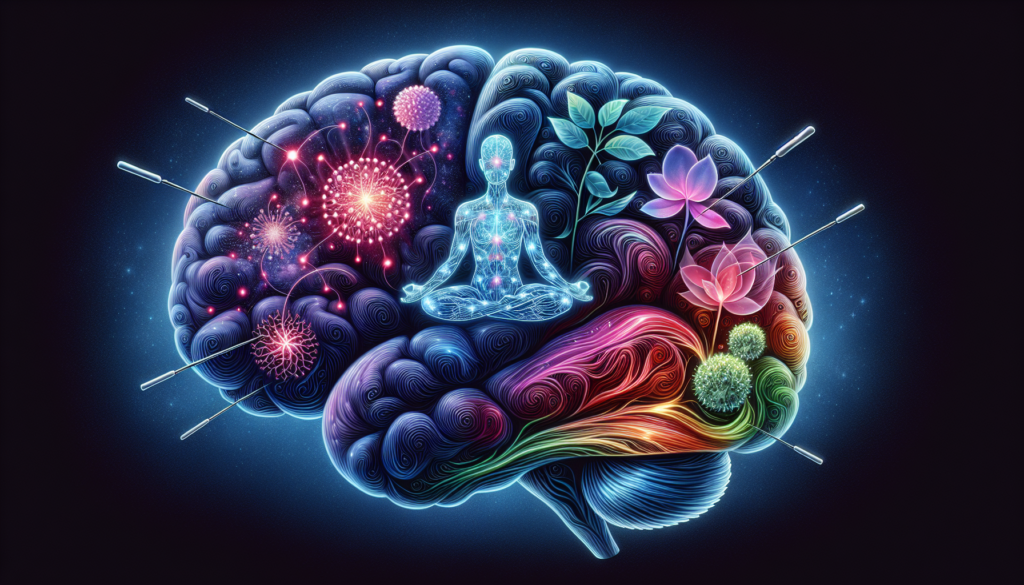You’re curious about the possibility of alternative treatments for neurological conditions. Neurological conditions can be challenging to manage, and conventional treatments may not always provide the desired results. Fortunately, there is growing interest in exploring alternative therapies that could potentially offer relief and support for those living with these conditions. In this article, we’ll take a closer look at the question of whether alternative treatments can be a viable option for addressing neurological conditions. So, if you’re seeking alternative approaches to managing your neurological condition, keep reading to discover what options might be available to you.
What are neurological conditions?
Neurological conditions refer to a range of disorders that affect the nervous system, including the brain, spinal cord, and peripheral nerves. These conditions can impact various bodily functions, such as movement, coordination, cognition, and sensory perception. Examples of neurological conditions include epilepsy, multiple sclerosis, Parkinson’s disease, Alzheimer’s disease, and migraines.
Definition
Neurological conditions are characterized by disruptions in the normal functioning of the nervous system, which can result from genetic factors, environmental triggers, or a combination of both. These conditions often have a significant impact on individuals’ quality of life and can cause physical and cognitive impairments.
Common neurological conditions
There is a wide array of neurological conditions, each with its own distinct symptoms and effects. Some common neurological conditions include:
- Epilepsy: A neurological disorder characterized by recurrent seizures.
- Multiple Sclerosis (MS): An autoimmune disease that affects the central nervous system and can cause various physical and cognitive impairments.
- Parkinson’s disease: A degenerative disorder that primarily affects movement and can lead to tremors, stiffness, and difficulty with balance.
- Alzheimer’s disease: A progressive brain disorder that impairs memory, thinking, and behavior.
- Migraines: Recurring headaches characterized by moderate to severe pain and often accompanied by other symptoms such as nausea and sensitivity to light and sound.
Traditional treatments for neurological conditions
Traditional treatments for neurological conditions typically focus on managing symptoms, slowing disease progression, and improving quality of life. These treatment approaches often involve the use of medications, therapies, and, in some cases, surgical interventions.
Medications
Medications are commonly prescribed for neurological conditions to help manage symptoms and prevent disease progression. Examples include anti-epileptic drugs, immunomodulators for MS, dopamine agonists for Parkinson’s disease, and cholinesterase inhibitors for Alzheimer’s disease.
Therapies
Therapies such as physical therapy, occupational therapy, speech therapy, and cognitive rehabilitation are often utilized to help individuals regain or improve their physical and cognitive abilities. These therapies aim to enhance mobility, coordination, communication skills, and overall functioning.
Surgical interventions
In certain cases, surgical interventions may be recommended to treat neurological conditions. For example, deep brain stimulation (DBS) surgery is used in Parkinson’s disease to target and stimulate specific areas of the brain to alleviate symptoms. Surgery can also be an option for epilepsy when medications are not effective in controlling seizures.

Challenges with traditional treatments
While traditional treatments for neurological conditions have proven to be beneficial for many individuals, they are not without their challenges.
Side effects
One significant challenge with traditional treatments is the potential for side effects. Medications, in particular, can cause adverse reactions such as drowsiness, nausea, dizziness, and mood changes. These side effects can negatively impact an individual’s overall well-being and quality of life.
Limited efficacy
Additionally, traditional treatments may not be equally effective for everyone. Response rates to medications and therapies can vary, and some individuals may not experience significant improvement in their symptoms. This variability in efficacy highlights the need for alternative treatment options.
High costs
The financial burden associated with traditional treatments can also pose a challenge for many individuals. The cost of medications, therapies, and surgical interventions can be substantial, particularly for those without adequate insurance coverage. This high cost can deter individuals from seeking the necessary treatment or create financial strain on families.
Exploring alternative treatments
Given the challenges associated with traditional treatments, many individuals with neurological conditions are increasingly interested in exploring alternative treatment options. Alternative treatments are non-traditional approaches that aim to complement or substitute traditional therapies. Some alternative treatment options for neurological conditions include:
Complementary and alternative medicine (CAM)
CAM encompasses various practices such as acupuncture, herbal remedies, chiropractic care, and nutritional therapies. These approaches focus on treating the whole person and promote holistic healing.
Mind-body interventions
Mind-body interventions, such as meditation, hypnosis, and biofeedback, emphasize the connection between the mind and body. These practices aim to reduce stress, enhance relaxation, and promote overall well-being.
Nutritional therapies
Nutritional therapies, including specific dietary approaches and the use of supplements, focus on optimizing a person’s nutrient intake to support overall brain health and reduce inflammation.
Herbal remedies
Herbal remedies involve the use of plant-based substances with potential therapeutic effects. Some herbs commonly used in neurological conditions include ginkgo biloba, St. John’s wort, and valerian root.
Acupuncture
Acupuncture is an ancient Chinese practice that involves inserting thin needles into specific points on the body. This technique is believed to stimulate the body’s natural healing mechanisms and restore balance.
Chiropractic care
Chiropractic care is a hands-on therapy that focuses on the musculoskeletal system, particularly the spine. It aims to alleviate pain, improve mobility, and enhance overall nervous system function.
Physical exercise
Regular physical exercise has been shown to have numerous benefits for neurological conditions. Exercise improves cardiovascular health, enhances cognitive function, and helps maintain mobility and strength.
Electromagnetic therapy
Electromagnetic therapy involves the use of electromagnetic fields to stimulate the nervous system. This therapy has shown potential in addressing conditions such as migraines and neuropathic pain.
Hyperbaric oxygen therapy
Hyperbaric oxygen therapy involves breathing in 100% oxygen in a pressurized chamber. This treatment can improve oxygen delivery to the brain and has shown promise in conditions such as traumatic brain injury and stroke.
Cannabis-based treatments
Cannabis-based treatments, particularly those containing cannabidiol (CBD), have gained attention for their potential therapeutic effects in conditions such as epilepsy, multiple sclerosis, and chronic pain. However, it is important to note that regulatory and legal aspects surrounding cannabis-based treatments vary by jurisdiction.

Effectiveness and evidence of alternative treatments
The effectiveness of alternative treatments for neurological conditions is a topic of ongoing research and debate. It is crucial to consider the available evidence when evaluating the potential benefits and risks of these treatments.
Scientific studies and research
Scientific studies play a vital role in assessing the efficacy and safety of alternative treatments. Rigorous research, such as randomized controlled trials (RCTs), provides valuable insights into the effects of alternative treatments on neurological conditions. However, it is important to note that the quality and quantity of scientific evidence can vary greatly depending on the specific treatment being studied.
Case studies and anecdotal evidence
Apart from scientific studies, case studies and anecdotal evidence contribute to the overall understanding of alternative treatments. While these forms of evidence may provide insights into individual responses and experiences, they should be interpreted with caution as they do not meet the same scientific standards as rigorous research studies.
FDA-approved alternative treatments
Some alternative treatments have gained approval from the U.S. Food and Drug Administration (FDA) for specific indications. For example, certain botanical drugs and medical devices have received FDA clearance for the treatment of migraines and chronic pain. However, FDA approval does not guarantee the effectiveness or safety of a treatment for other neurological conditions.
The role of alternative treatments in a comprehensive approach
When considering alternative treatments for neurological conditions, it is important to view them as part of a comprehensive approach that complements traditional treatments. Here are some ways in which alternative treatments can play a role in enhancing overall care:
Supplementing traditional treatments
Alternative treatments can be used in conjunction with traditional treatments to supplement their effects. For example, acupuncture or chiropractic care might be used alongside medications or therapies to address specific symptoms or enhance overall well-being.
Individualized treatment plans
Given the varying responses to traditional treatments, alternative treatments offer an opportunity to tailor treatment plans to individual needs. Integrating alternative therapies into a treatment plan can help address specific concerns and preferences while still addressing conventional treatment goals.
Improving overall well-being
Many alternative treatments focus on improving overall well-being, which can have a positive impact on individuals with neurological conditions. Techniques like meditation and nutritional therapies can help reduce stress, improve sleep quality, and enhance mood, leading to a better overall quality of life.
Holistic approaches
Alternative treatments often adopt a holistic approach that considers various aspects of a person’s well-being, including physical, emotional, and spiritual dimensions. This comprehensive approach can help individuals address multiple facets of their health and promote greater overall balance.
Risk and benefits assessment
Before incorporating alternative treatments, it is crucial to assess the risks and benefits. Healthcare professionals can provide guidance in understanding potential interactions, contraindications, and safety considerations when combining alternative and traditional treatments.

Finding qualified practitioners
When seeking alternative treatments for neurological conditions, it is important to find qualified practitioners who have the appropriate credentials and expertise. Here are some factors to consider:
Credentialing and certifications
Look for practitioners who are credentialed and certified in their respective fields. For example, acupuncturists should be licensed, and chiropractors should have appropriate educational qualifications and certifications.
Reputation and reviews
Consider the reputation and reviews of practitioners. Seek recommendations from trusted sources and look for reviews or testimonials from previous patients to gauge the practitioner’s competence and effectiveness.
Collaborative healthcare teams
Incorporating alternative treatments may involve working with a collaborative healthcare team that includes both traditional and alternative healthcare professionals. This interdisciplinary approach can ensure comprehensive and coordinated care for individuals with neurological conditions.
Considerations before trying alternative treatments
Before starting any alternative treatments, it is essential to consider the following factors:
Consulting healthcare professionals
It is crucial to consult with healthcare professionals, such as neurologists, before trying alternative treatments. They can provide guidance on potential risks, interactions with traditional treatments, and evidence-based recommendations.
Understanding potential risks
Alternative treatments, like any medical intervention, come with potential risks. It is important to understand these risks and weigh them against potential benefits. Healthcare professionals can help assess individual circumstances and determine the appropriateness of alternative treatments.
Personal circumstances and preferences
Consider personal circumstances and preferences when exploring alternative treatments. Factors such as financial constraints, time commitments, and personal beliefs should be taken into account to ensure a realistic and sustainable approach to treatment.

Regulatory and legal aspects of alternative treatments
The regulatory and legal landscape surrounding alternative treatments can vary depending on the jurisdiction and specific treatments. Here are some important considerations:
FDA regulations
The FDA regulates certain alternative treatments, such as botanical drugs and medical devices, to ensure safety and efficacy. It is important to be aware of FDA-approved treatments and any associated regulations.
Legal status of specific treatments
The legal status of specific alternative treatments, particularly those involving cannabis-based products, can vary widely by location. Understanding the legal implications and regulations surrounding these treatments is essential before considering their use.
Conclusion
When it comes to neurological conditions, alternative treatments can offer additional options for individuals seeking to enhance their well-being and manage symptoms. While traditional treatments remain the mainstay, alternative approaches such as complementary medicine, mind-body interventions, and nutritional therapies can provide a holistic and individualized treatment plan. It is important to approach alternative treatments with an open mind, consult with healthcare professionals, and consider factors such as evidence, risks, and personal circumstances. Ultimately, the integration of different treatment approaches can lead to a comprehensive and personalized approach to managing neurological conditions.



